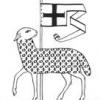direct x9 project
well I am studying the directxtutorial.com web site.I have drawn a triangle and need to know what to do next.
It depends on what you're trying to achieve. If your goal was to draw a triangle, you're done. If not, tell us where you want to go, and we can offer suggestions.
If you're at the stage of just having drawn a triangle there is a lot more you should probably familiarise yourself with before you launch into a project.
Once you have those worked out you could create something like a simple "asteroids" type game.
- You should get your mind around rotation and translation matrices, since they will be used a fair bit from now on.
- Then look at something like vertex colours if you haven't already, and then textured triangles.
- If you're comfortable with all that, I'd try loading more complex model files.
- Then try your hand at picking (which is when you click with the mouse and you work out which 3d object your mouse click was over).
- And then learn about the "game loop", which is the core part of every game.
Once you have those worked out you could create something like a simple "asteroids" type game.
well I have read 2 books on dx9 and c++.one is called Intro to 3d game programming with directx9 by luna and Direct X 9 The definitive guide to direct 3d by thorn.Are there any other good books on dx9 that I should read.I am slowly learning dx9 and c++.
just complete the free tutorials directxtutorial has to offer first.. Most tutorials he has there also have some exercises you can do to further familiarize yourself
thanks for the advice and actually I have these tutorials bound and printed out.I will read them and work the exercises.
If you've got a basic triangle on screen, the obvious next steps are to texture it, light it and make it spin. That will give you a grounding in texturing, states, geometry and transforms, which - believe it or not - constitute a large proportion of the stuff you need to know (of course with these four the level of complexity you can shoot for is more-or-less unlimited).
If you've already done these, try migrating from the fixed pipeline to shaders. It's not a bad time to start getting comfortable with shaders, and you're likely going to be wanting to use them later on.
If you're already happy with that much, the next steps I'd recommend would be a simple model viewer or a solar system. The former will get you doing some more complex geometry, the latter will let you get your hands dirty with multiple objects and multiple transforms. You can also build on these by, e.g., animating the model or texturing and lighting the planets in your solar system.
If you've already done these, try migrating from the fixed pipeline to shaders. It's not a bad time to start getting comfortable with shaders, and you're likely going to be wanting to use them later on.
If you're already happy with that much, the next steps I'd recommend would be a simple model viewer or a solar system. The former will get you doing some more complex geometry, the latter will let you get your hands dirty with multiple objects and multiple transforms. You can also build on these by, e.g., animating the model or texturing and lighting the planets in your solar system.
I am currently working on a pong game, but thanks for the advice.I have read about shaders but I am still working with a fixed pipeline.I like pong because it deals with texturing and movement and also some geometry.I also have been reading up on linear algebra.once again thanks for the advice I will put it into action when I get a chance.
This topic is closed to new replies.
Advertisement
Popular Topics
Advertisement







